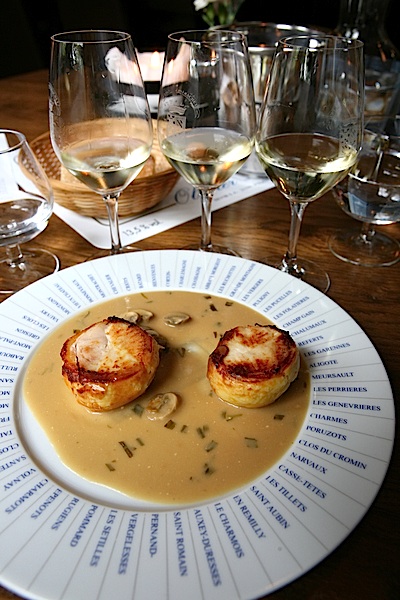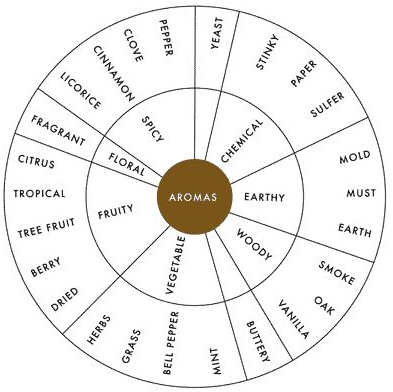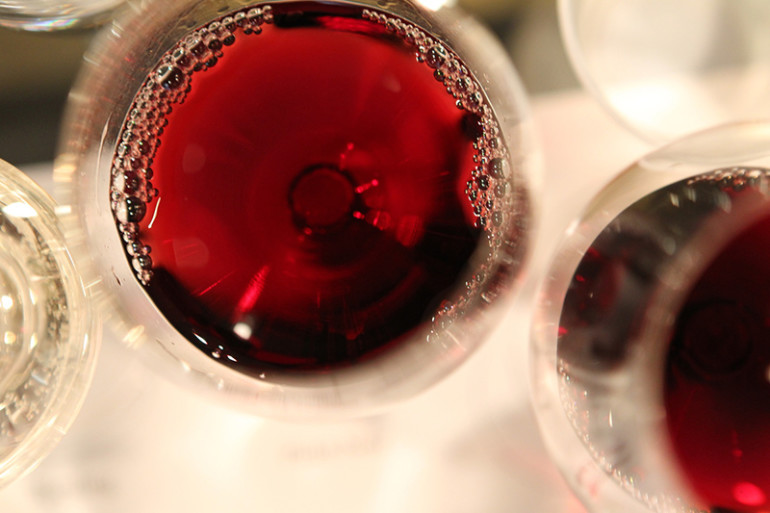In the world of wine, what does the phrase “defining your palate” mean to you? As we all get to know our palates not only in the world of wine but also with foods, there are lots of clues that inform our wine preferences. There’s a great big ocean of good wine out there and stylistically, all over the map — literally. Needless to say, things can seem a bit daunting. So, when you sharpen your ability to figure out what you like and why you like it, you can get on the road to buying more efficiently for your palate. The language of wine is also important as it helps convey your thoughts more clearly to describe what you taste. There is a hoard of other terms and tastes out there, but let’s start with the basics. After all, the beauty of wine is its sensual nature, its ability to involve most of our senses, sight, smell and taste. The feel of the bottle and the sound of the cork popping out of the bottle rounds out all five!
Bitter
 If you tend to like bitter foods (greens like arugula and watercress), vinegar-based food (condiments like mustard) and drink your coffee black with no sugar, like me, then you probably also enjoy more tannic wines. Why? Because tannin has a drying, bitter sensation. Think of drinking black tea without milk. That’s the effect of tannin. It’s not a flavor, but more of a textural thing, as tannin comes from the skins, seeds, stems of the grape. Which wines are more tannic? Cabernets, Merlots, wines from Northern Italy like Barolos, Barbarescos (Nebbiolo is the grape) and some Syrahs.
If you tend to like bitter foods (greens like arugula and watercress), vinegar-based food (condiments like mustard) and drink your coffee black with no sugar, like me, then you probably also enjoy more tannic wines. Why? Because tannin has a drying, bitter sensation. Think of drinking black tea without milk. That’s the effect of tannin. It’s not a flavor, but more of a textural thing, as tannin comes from the skins, seeds, stems of the grape. Which wines are more tannic? Cabernets, Merlots, wines from Northern Italy like Barolos, Barbarescos (Nebbiolo is the grape) and some Syrahs.
Acidic
Acid is similar texturally. In wines it brings them life, lifts up the flavors, makes them zippy and fresh. We all know what acid in foods is like. Anything with lemon, citrus in general, tomatoes, etc. All those tart, tangy foods really get your salivary glands going. Acid is essential in wine but some wines are made to preserve that acid and some are made in such a way that softens the acid. Think of a light, refreshing, tart Sauvignon Blanc from New Zealand or the Loire Valley in France versus a full-bodied, creamy, buttery Chardonnay. The way they feel on your tongue is very different.
Body
Another component in wine is body. The way I like to think of body is the difference between skim milk versus whole milk versus heavy cream. The weight of the liquid and mouthfeel — the way it feels in your mouth — is key to understanding your palate. You say to yourself, “Wow, this wine is rich, heavy, full-bodied and I like it!” or, “Geez, I wish this wine weren’t so strong.” While this term isn’t really used in the industry, one can interpret it as meaning too heavy or too tannic.
Aromas
 When we limit ourselves to words like smooth, dry, sweet, we’re missing out on some more dialed in adjectives that will inform our wine search. Words like fruity, earthy, spicy and floral help you and the outside world better define your palate and lead you to some interesting finds.
When we limit ourselves to words like smooth, dry, sweet, we’re missing out on some more dialed in adjectives that will inform our wine search. Words like fruity, earthy, spicy and floral help you and the outside world better define your palate and lead you to some interesting finds.
So, to summarize, if you’re the kind of person who likes rich, creamy sauces — and frankly, who doesn’t — and you drink four double grande lattes a day, then you probably prefer wines that are richer, and more full-bodied, possibly more oaky, but not too tannic. Or, maybe you’re like me and like it all!



